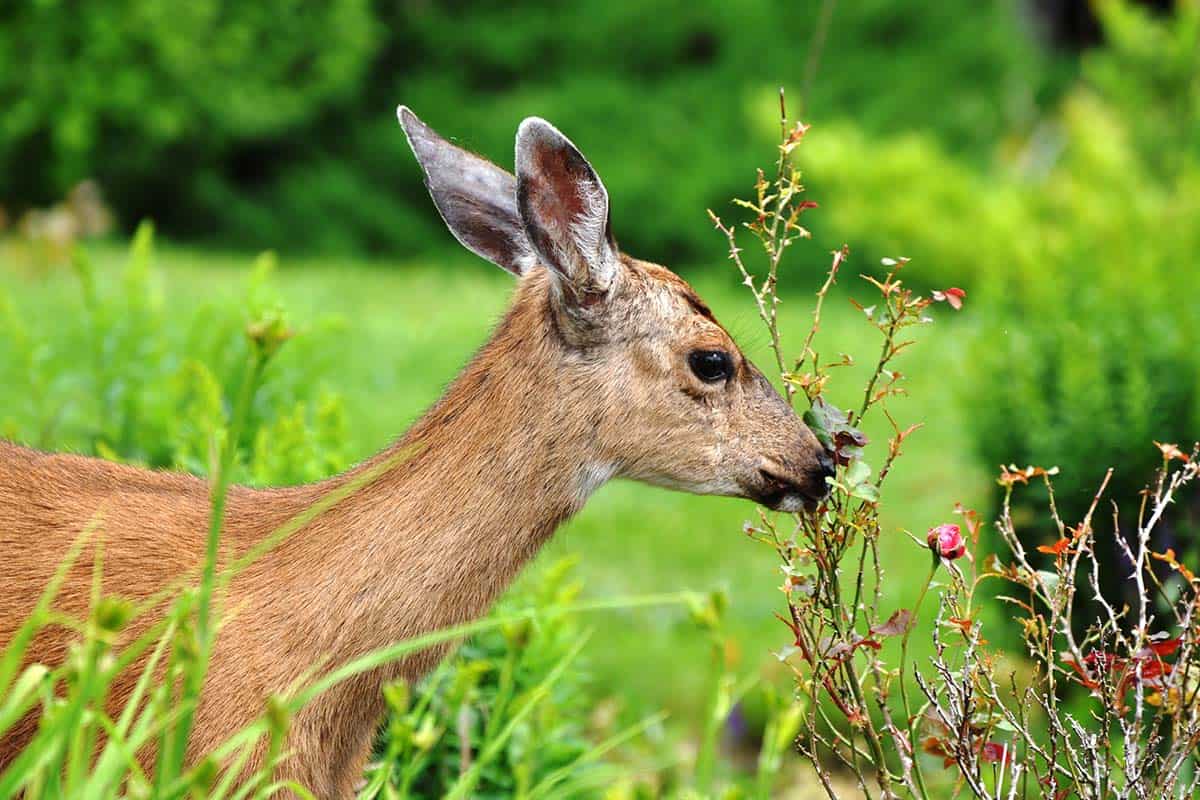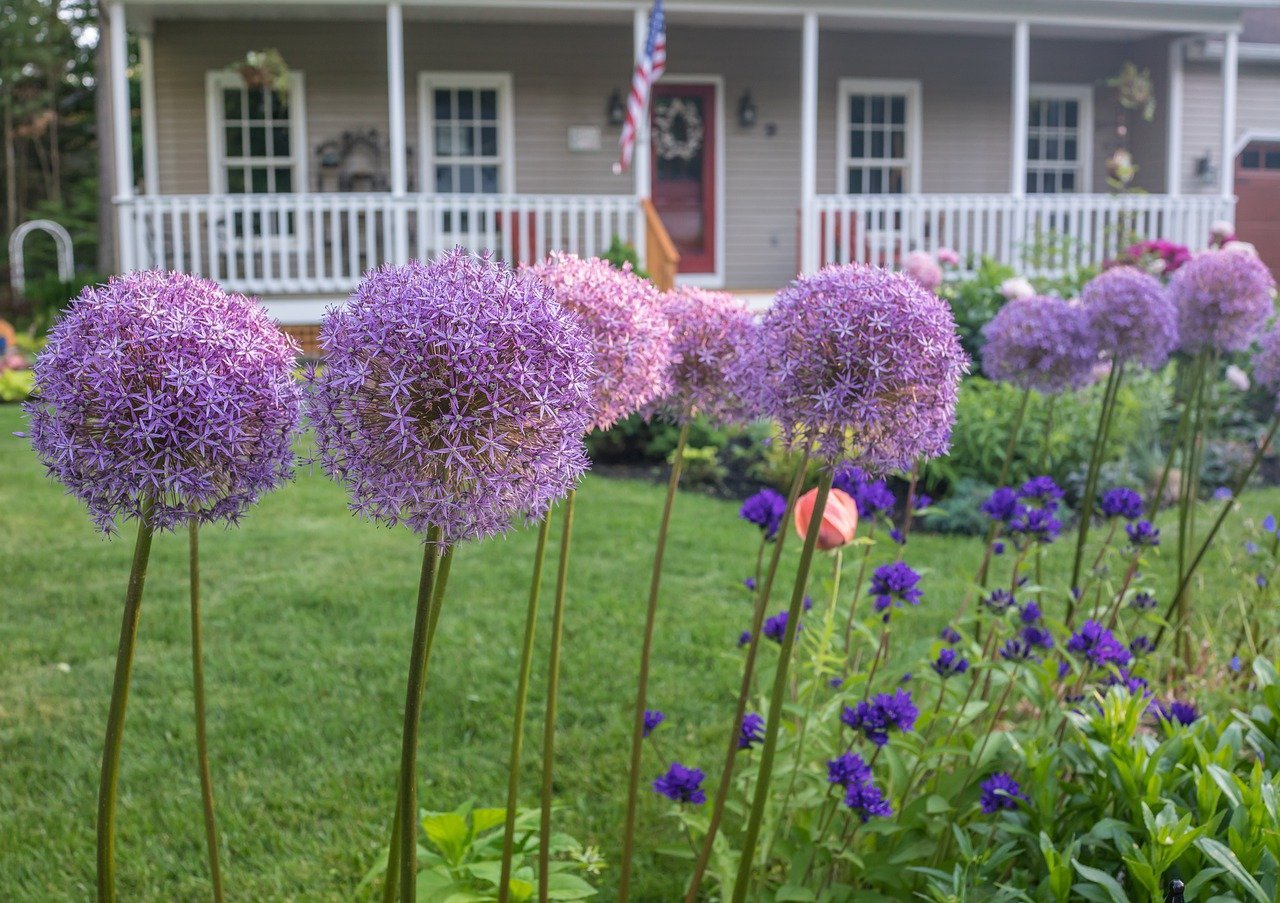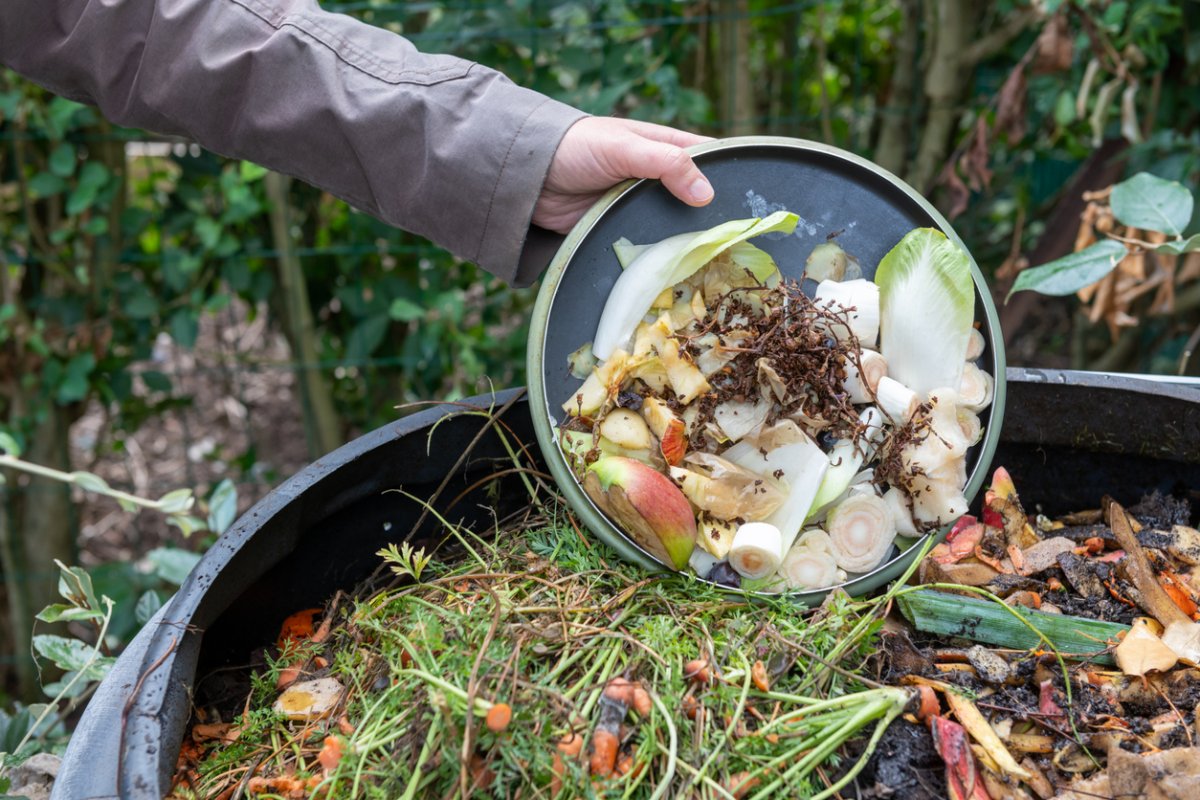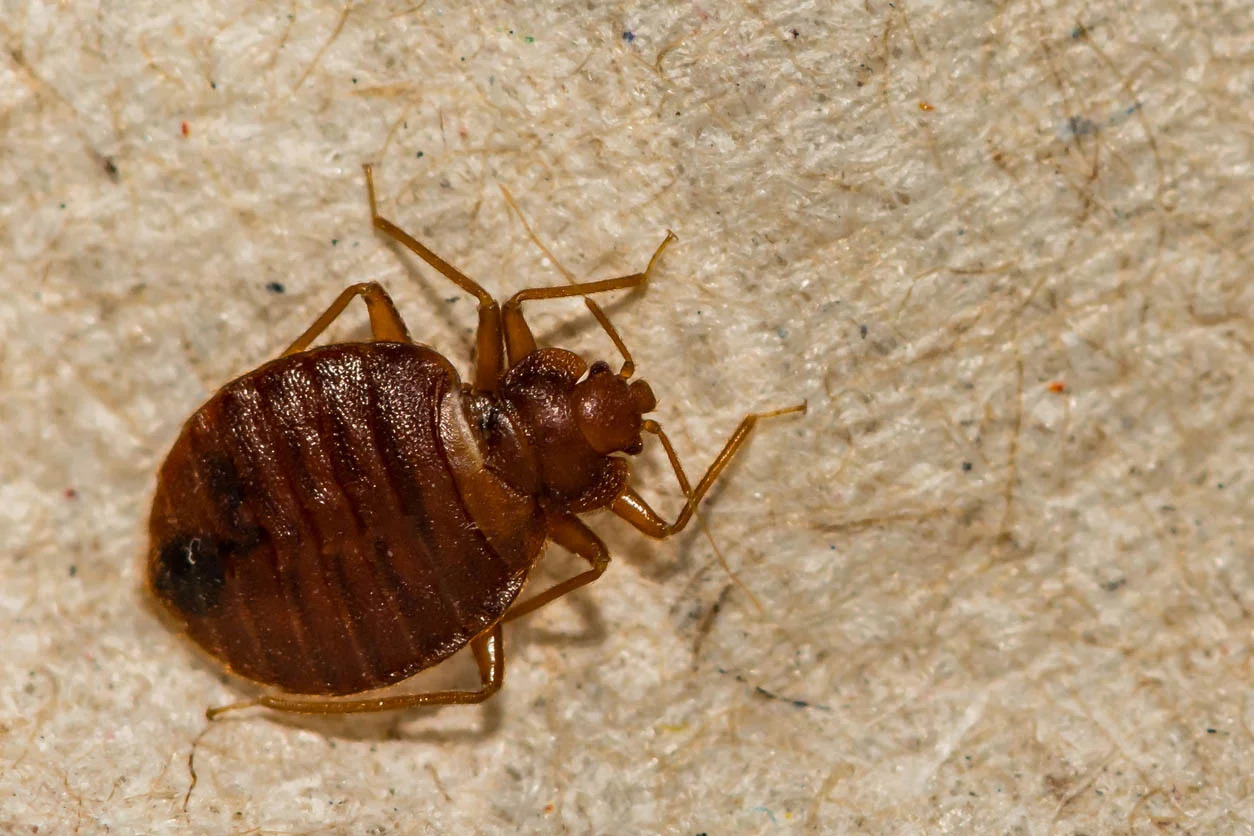Home>Gardening Tips and Tricks>Problem Solving>How To Keep Deer Away From Trees


Problem Solving
How To Keep Deer Away From Trees
Published: November 13, 2023
Discover effective solutions for keeping deer away from your trees with our problem-solving techniques. Protect your trees and garden from unwanted deer damage.
(Many of the links in this article redirect to a specific reviewed product. Your purchase of these products through affiliate links helps to generate commission for Chicagolandgardening.com, at no extra cost. Learn more)
Table of Contents
Introduction
Deer can be a beautiful sight in the wild, but when they start invading your property and munching on your carefully cultivated trees, it can be a frustrating and costly problem. Whether you have a small backyard garden or a vast landscape, finding effective ways to keep deer away from your trees is essential to protect your investment and maintain the overall health of your landscape.
Deer are attracted to trees for several reasons. They find the tender young leaves and twigs of trees delicious and, depending on the season, may also be drawn to the fruits, nuts, or bark. Additionally, trees offer shelter and a good vantage point for deer to survey their surroundings. However, with a combination of understanding deer behavior, implementing natural deterrents, and employing physical barriers, you can effectively keep deer away from your trees.
In this article, we’ll explore various methods and techniques to deter deer from targeting your trees. We will discuss the natural habits and behavior of deer, including the times of year when they are more likely to cause damage, and how to leverage this knowledge to your advantage. We will also explore the use of scare tactics, repellents, and physical barriers to protect your trees from deer damage.
Furthermore, we’ll delve into the concept of creating a deer-resistant landscape by choosing tree species that are less appealing to deer, as well as incorporating deer-resistant plants and shrubs into your overall garden design. With these strategies in place, you can enjoy the beauty of your trees and the serenity of your outdoor space without having to worry about deer wreaking havoc on your landscape.
So, whether you’re a homeowner or a professional landscaper, let’s dive into the world of deer control and discover effective and practical ways to keep deer away from your trees.
Understanding Deer Behavior
In order to effectively deter deer from damaging your trees, it’s important to understand their behavior patterns and preferences. By gaining insight into their habits, you can implement targeted strategies to keep them at bay.
Deer are most active during the dawn and dusk hours, known as crepuscular activity. This means that they are more likely to visit your property during these times, so it’s important to be extra vigilant during these periods. They also tend to be more active in the spring and fall, as they search for food and mates.
Deer are herbivores and have a diverse diet. They are particularly fond of young leaves, tender twigs, fruits, nuts, and bark. They may also be attracted to trees with low-hanging branches that provide a comfortable resting spot. Understanding what deer find appealing will help you identify which trees in your landscape are most at risk.
Deer have an acute sense of smell and can quickly detect the scent of food or potential threats. They are also curious creatures and may be attracted to new and unfamiliar odors. This can be advantageous when it comes to using certain deterrents or repellents, as we will discuss later in this article.
Deer are cautious animals and are constantly on the lookout for predators. They have excellent hearing and can detect even the slightest of sounds. This hyperawareness can make it challenging to surprise or startle them, but it also means that scare tactics can be effective in keeping them away from your trees.
By observing deer behavior and understanding their preferences, you can tailor your deer deterrent strategies to match their instincts. In the following sections, we will discuss various methods to deter deer, taking advantage of their behavior and sensory attributes.
Natural Deer Deterrents
When it comes to keeping deer away from your trees, natural deterrents can be a safe and effective option. These methods work by making your landscape less appealing to deer, often by targeting their senses of smell, taste, and sight.
One popular natural deterrent is the use of strong-smelling plants. Deer have sensitive noses and are often deterred by certain odors. Planting fragrant herbs like lavender, rosemary, and mint around your trees can help mask the appealing scent of the trees and discourage deer from approaching. Additionally, some plants, like marigolds and yarrow, have a naturally strong scent that deer find unpleasant, making them great additions to your landscape.
Taste can also play a role in deterring deer. Certain plants are naturally unappetizing to deer due to their bitter or pungent taste. Consider incorporating plants like sage, thyme, and Russian sage into your landscape, as deer tend to avoid consuming them. These plants not only add beauty to your garden, but they also serve as a natural deterrent.
Another common natural deterrent is the use of soap bars. Hanging scented soap bars from trees or placing them around your garden can help repel deer. The strong scent of the soap can confuse and deter the deer, making them less likely to approach the area. Just remember to replace the soap periodically to maintain its effectiveness.
Deer are also wary of unfamiliar objects or movement. Utilizing reflective objects, such as aluminum foil strips, wind chimes, or plastic flags, can create movement and noise that will startle deer and keep them away from your trees. Additionally, placing wind-activated devices, like scare tape or pinwheels, will create a visual deterrent as they spin and reflect light.
Introducing natural predators can also help deter deer. If you live in an area where it’s possible to do so, consider attracting or providing habitat for animals that are natural deer predators, such as coyotes, foxes, or hawks. These predators can help keep the deer population in check and reduce the likelihood of deer damaging your trees.
By utilizing natural deer deterrents, you can create a landscape that is less appealing to deer and minimize the risk of tree damage. Remember to regularly monitor and adjust these deterrent methods as needed for optimal effectiveness.
Physical Barriers
When natural deterrents aren’t enough to keep deer away from your trees, physical barriers can provide an effective solution. These barriers physically block access to your trees and create a boundary that deer are less likely to cross.
One of the most common physical barriers is a deer fence. Deer fences can be made of various materials, such as metal or polypropylene mesh, and should ideally be at least 8 feet high to prevent deer from jumping over. Install the fence around your property or specifically around the area where your trees are located to create a deer-proof enclosure. Make sure the fence is installed securely and close to the ground to prevent deer from slipping underneath.
If a full fence is not suitable for your landscape, individual tree protectors can be used. These protectors are typically wire mesh cylinders that surround the trunk of the tree, preventing deer from reaching the lower branches and bark. Make sure the tree protector is tall enough to cover the lowest branches of the tree, as deer can reach higher than expected when standing on their hind legs.
Another physical barrier option is a motion-activated sprinkler system. These systems use sensors to detect the movement of animals, activating sprinklers that spray water and startle the deer. The sudden burst of water is enough to deter most deer from approaching your trees. This not only creates a physical barrier but also adds a scare element to keep deer at bay.
If you have a smaller garden or a few individual trees that need protection, simple and cost-effective options like chicken wire or netting can be used. Wrap the wire or netting around the trees, creating a protective layer that deer can’t penetrate. Just be sure to secure the wire or netting tightly to prevent deer from pushing through.
Remember to regularly inspect and maintain your physical barriers to ensure they remain intact. Look out for any holes, damages, or areas where deer may be able to bypass the barrier. By combining natural deterrents with physical barriers, you can create a highly effective defense system to safeguard your trees from deer damage.
Scare Tactics
Scare tactics can be an effective way to deter deer from approaching and damaging your trees. By creating an atmosphere of fear and unpredictability, you can make your landscape less inviting to these creatures.
One common scare tactic is the use of loud noises. Startling deer with sudden loud sounds can make them wary and cautious about approaching your trees. You can achieve this by using devices like motion-activated sprinklers that emit loud noises, air horns, or even banging pots and pans together. The sudden noise will startle the deer and make them think twice before venturing near your trees.
Motion-activated lights can also be used as scare tactics. When a deer approaches the area, the lights will illuminate, creating a sudden burst of brightness that can frighten them off. This method is particularly effective at night when visibility is reduced, as the sudden exposure to bright light can startle and deter deer.
Visual deterrents can be another effective scare tactic. Hanging or placing objects that resemble predators, such as scarecrows, plastic owls, or coyote decoys, can fool deer into thinking that a threat is nearby. The sight of these predator-like objects can create enough fear and uncertainty to keep deer away from your trees. Just remember to relocate or periodically move these deterrents to prevent deer from becoming accustomed to their presence.
Human presence can also serve as a scare tactic. Regularly visiting and moving around your property can disrupt the deer’s routine and make them uneasy. Setting up a motion-activated sprinkler system or playing recordings of human voices and conversation can also create the illusion of human activity. The unpredictable nature of human presence will make deer think twice before approaching your trees.
It’s important to note that scare tactics must be used consistently and in conjunction with other methods to maintain their effectiveness. Deer can become accustomed to certain stimuli and will eventually ignore them if they realize there is no real danger. Rotating and combining scare tactics will help prevent deer from growing accustomed to a specific deterrent method.
By implementing scare tactics, you can create an environment that is unfavorable and intimidating for deer, discouraging them from approaching and damaging your trees.
Repellents for Deer
If you’re looking for a more hands-off approach to deterring deer from your trees, using commercially available deer repellents can be an effective solution. These repellents work by emitting odors, tastes, or sensations that deer find unpleasant, encouraging them to stay away from your trees.
One type of deer repellent is scent-based repellents. These products use natural or synthetic scents that mimic the smell of predators or the presence of human activity. By spraying or applying these repellents around your trees, you create a deterrent barrier that alerts deer to the potential threat of predators or humans nearby. The stronger the scent and the more frequent the application, the more effective the repellent will be.
Taste-based repellents are another popular option. These repellents contain ingredients that make the leaves and bark of trees taste bitter, sour, or spicy, rendering them unappetizing to deer. These repellents can be sprayed or applied directly to the trees, creating a deterrent that discourages deer from feeding on them. It’s important to reapply these repellents regularly, especially after rain events, to maintain their effectiveness.
There are also motion-activated repellents available on the market. These devices, such as ultrasonic devices or water-spraying sprinklers, detect the movement of deer and respond by emitting high-frequency sounds or spraying a burst of water. The sudden noise or sensation startles the deer, teaching them to associate the area with an unpleasant experience and deterring them from approaching your trees.
It’s worth noting that while repellents can be effective, they typically need to be used consistently and in combination with other deterrent methods to achieve the best results. Deer can become accustomed to certain scents or tastes over time, so rotating between different repellents or using multiple repellent types can help ensure their effectiveness.
When using repellents, always follow the manufacturer’s instructions and consider any potential environmental impacts. Some repellents may be harmful to other animals, beneficial insects, or plants, so be sure to choose products that are safe for your specific landscape and ecosystem.
By utilizing repellents specifically designed to deter deer, you can create an unfavorable environment that encourages deer to avoid your trees and seek food elsewhere.
Creating a Deer-Resistant Landscape
While implementing deterrents and barriers can help mitigate deer damage to your trees, creating a deer-resistant landscape is a proactive and long-term solution. By selecting tree species and incorporating plants that are less appealing to deer, you can reduce the likelihood of deer causing damage to your landscape.
Start by choosing tree species that are known to be less attractive to deer. Some trees, such as pine, spruce, and cedar, are naturally less palatable to deer due to their taste and texture. Including these tree species in your landscape can help deter deer from targeting your trees.
In addition to tree selection, consider incorporating deer-resistant plants and shrubs into your garden. There are a variety of plants that deer tend to avoid, either due to their scent, taste, or toxic properties. Examples of these plants include yarrow, lamb’s ear, lavender, butterfly bush, and sage. Planting these around your trees can create a buffer zone that deters deer and increases the likelihood of them feeding elsewhere.
Grouping together deer-resistant plants can also act as a natural deterrent. Deer generally prefer to continue feeding in areas where they have already established a pattern. By clustering deer-resistant plants together, you can create a boundary that deer are less likely to cross, protecting your trees in the process.
Consider incorporating texture and scent into your landscape. Deer are more attracted to smooth and tender foliage, so adding plants with rough leaves, thorns, or strong scents can discourage them from feeding on your trees. Roses, barberry, and Russian sage are good examples of plants with thorny or rough foliage that deer are more likely to avoid.
Creating physical barriers within your landscape can also help protect your trees. Strategically placing large rocks, gravel beds, or low fences around your trees can make it more difficult for deer to access them. These features act as natural deterrents, discouraging deer from entering your tree zone.
Regularly inspect your landscape and trees for signs of deer damage. Deer can be persistent and may attempt to overcome barriers or find new access points to reach your trees. By promptly addressing any issues, repairing barriers, and adapting your strategies, you can maintain a deer-resistant landscape.
Remember that while creating a deer-resistant landscape can greatly reduce the risk of deer damage to your trees, it is not foolproof. In times of extreme hunger or in areas with high deer populations, deer may still target your trees. Combining a variety of deterrent methods and regularly monitoring your landscape will yield the best results in protecting your trees from deer damage.
Conclusion
Dealing with deer damage to trees can be a frustrating challenge, but by understanding deer behavior, implementing natural deterrents, using physical barriers, and creating a deer-resistant landscape, you can effectively keep deer away from your trees and preserve the beauty of your landscape.
Understanding when deer are most active and what they find appealing can help you implement targeted strategies. Using natural deterrents such as strong-smelling plants, taste-based repellents, and scare tactics can make your trees less attractive to deer and discourage their presence. Physical barriers such as deer fences, tree protectors, and motion-activated sprinkler systems can physically block access to your trees and create boundaries that deer are less likely to cross.
Additionally, creating a deer-resistant landscape by selecting tree species that are less appealing to deer, incorporating deer-resistant plants and shrubs, and strategically placing textures and scents can further deter deer from feeding on your trees. Regularly monitoring your landscape, adapting your strategies, and promptly addressing any issues are key to maintaining a deer-resistant environment.
Remember that while these methods can be effective, no approach is foolproof. In times of extreme hunger or in areas with high deer populations, additional measures may be necessary. Combining different strategies and regularly evaluating their effectiveness will help ensure long-term success in protecting your trees from deer damage.
By implementing these techniques and being proactive in deterring deer, you can enjoy the beauty of your trees and the serenity of your outdoor space, knowing that you have made your landscape less inviting to deer visitors.










